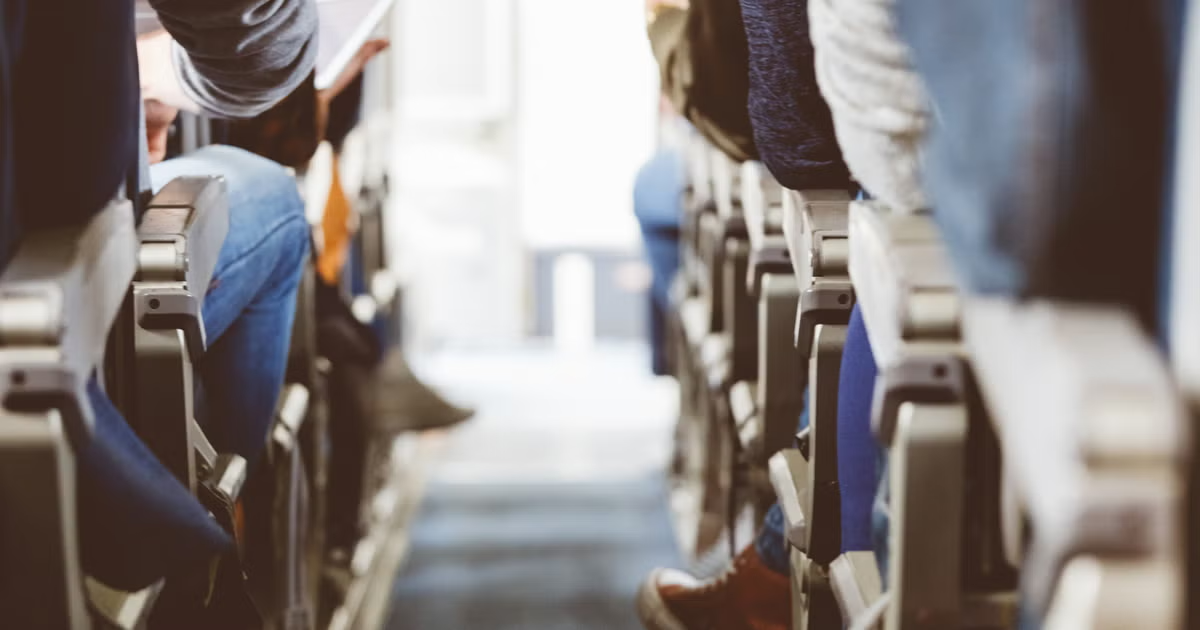Long flights. Road trips. Train rides. These journeys can be exciting, but they also come with an often-overlooked health risk: venous thromboembolism (VTE).
Sitting for extended periods—especially in cramped positions—can increase the risk of deep-vein thrombosis (DVT), where a blood clot forms in the deep veins, typically in the legs. If that clot breaks loose and travels to the lungs, it can cause a pulmonary embolism (PE)—a potentially life-threatening emergency.
At the Coalition to Prevent VTE, we want travelers to enjoy their journeys safely, armed with the knowledge and tools to reduce their VTE risk.
What Happens During Travel?
During long travel, especially flights lasting over four hours, your circulation slows. The position you’re often stuck in—legs bent, little legroom, minimal movement—can promote blood pooling in the lower limbs. For some, this can lead to clot formation.
This is sometimes referred to as “economy class syndrome,” although it can happen in any seat, regardless of class or mode of transport.
Who’s at Risk During Travel?
While VTE can affect anyone, you’re at higher risk during travel if you:
- Have a personal or family history of DVT or PE
- Are over age 60
- Are pregnant or recently postpartum
- Have cancer or are undergoing chemotherapy
- Are taking hormone replacement therapy or birth control pills
- Have recently had surgery
- Are obese or sedentary
- Are a smoker
- Have a blood clotting disorder
Even if you’re generally healthy, extended immobility can increase your risk, so prevention matters for everyone.
Signs to Watch For
Signs of DVT (in the leg):
- Swelling, usually in one leg
- Pain or tenderness that starts in the calf or thigh
- Warmth or redness over the area
Signs of PE:
- Sudden shortness of breath
- Chest pain, especially when breathing in
- Rapid heartbeat
- Coughing up blood
- Feeling lightheaded or fainting
If you experience any of these symptoms during or after travel, seek medical attention immediately.
How to Prevent VTE While Traveling
Luckily, preventing VTE during travel is simple and doesn’t require major lifestyle changes:
1. Move Regularly
- Stand, walk, or stretch every 1–2 hours if possible.
- If you can’t stand, do seated leg exercises: ankle circles, toe lifts, and knee lifts.
2. Stay Hydrated
- Drink water before and during the trip.
- Avoid alcohol and caffeine, which can dehydrate you.
3. Wear Loose Clothing
- Avoid tight waistbands and pants that restrict circulation.
4. Consider Compression Stockings
- Medical-grade compression socks help promote blood flow in the legs.
- Especially recommended for higher-risk travelers.
5. Talk to Your Doctor
- If you’re at high risk, ask whether low-dose anticoagulants are right for you before you travel.
Spreading Awareness Saves Lives
Many people are unaware that travel-related VTE even exists—until it happens to them. By educating the public and promoting preventative action, we can make travel safer for everyone.
The Coalition to Prevent VTE is committed to making sure this issue gets the attention it deserves. Whether you’re a frequent flyer, a healthcare provider, or just planning your next holiday, awareness of travel-related VTE can make all the difference.
Enjoy the journey—safely.
Stay informed. Stay moving. Prevent VTE.

